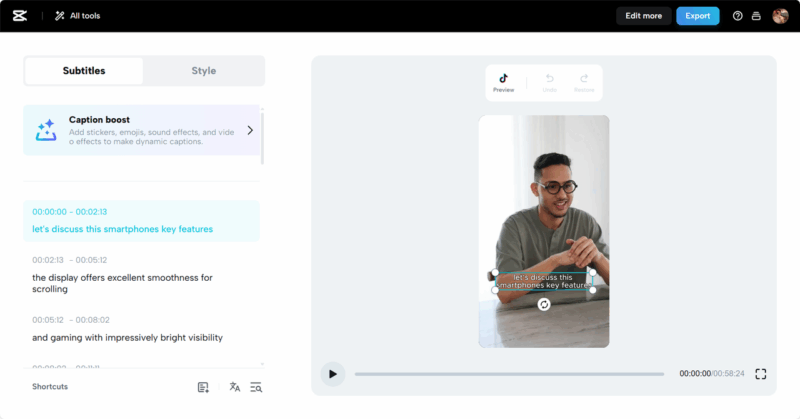Welcome to the world of construction management!
We’re here to explore the latest and coolest innovations in construction management software.
Think of it like using smart tools to make building things easier and better. In this journey, we’ll check out the new and exciting ways technology is changing how construction projects are done.
So, let’s dive in and discover how these fancy digital tools make construction projects more efficient, clear, and successful.
How is Construction Software Changing the Game in the Industry?
Construction management software is transforming the industry by introducing game-changing innovations that enhance efficiency, collaboration, and project management.
Here’s a closer look at how construction software is reshaping the game in the industry:
Project Planning and Scheduling
- Before: Traditional methods relied on manual scheduling and paper-based planning.
- Now: Construction software automates project scheduling, optimizing timelines, and helping teams stay organized. This ensures that tasks are completed on time, minimizing delays.
Resource Management
- Before: Allocating resources manually led to inefficiencies and potential shortages.
- Now, Construction software allows for real-time tracking of resources, from materials to the workforce. This makes sure that resources are utilized effectively, reducing waste and improving overall productivity.
Collaboration and Communication
- Before: Communication gaps between on-site and off-site teams were common.
- Now, Construction workforce management software facilitates seamless communication through centralized platforms. This ensures that all involved in the project stay informed, reducing misunderstandings and delays.
Document Management
- Before: Managing and sharing project documents was a cumbersome process.
- Now: Construction software provides cloud-based document management, allowing easy access and collaboration on project documentation. This streamlines workflows and decreases the risk of errors.
Cost Tracking and Budgeting
- Before: Budget overruns and cost tracking were challenging to manage in real-time.
- Now, Construction software provides accurate and real-time cost tracking. This helps teams stay within budget, avoid surprises, and make more informed financial decisions throughout the project.
Risk Management
- Before: Identifying and mitigating risks relied heavily on manual processes.
- Now, Construction software incorporates risk management tools that analyze potential issues and provide proactive strategies to minimize risks. This ensures a more secure and predictable project outcome.
Data Analytics
- Before: Data analysis for project insights was time-consuming and limited.
- Now, Construction software leverages data analytics to provide actionable insights into project performance. This allows for informed decision-making, helping teams continuously improve their processes.
Mobile Accessibility
- Before: On-site teams had limited access to real-time project information.
- Now, Construction software offers mobile accessibility, allowing on-site personnel to access critical project data, make updates, and communicate efficiently from their devices. This boosts on-site productivity and responsiveness.
In essence, construction software is changing the game by bringing about a digital transformation in project management.
The industry is evolving toward a more connected, efficient, and data-driven future where construction projects can be executed with greater precision and success.
The Types of Construction Software Innovations: Paving the Way for Efficiency
Let us delve into the diverse types of construction software innovations that are taking construction management to higher levels:
Project Management Software
- Benefits: Centralizes project information, streamlines communication, and enhances collaboration among team members, leading to improved project efficiency.
- Example: Procore, CoConstruct.
Building Information Modeling (BIM) Software
- Benefits: Facilitates 3D modeling of construction projects, enabling better visualization, design coordination, and clash detection, reducing errors during construction.
- Example: Autodesk BIM 360, Revit.
Construction Estimating Software
- Benefits: Automates the estimation process, providing accurate cost predictions, reducing manual errors, and aiding in budget planning.
- Example: Clear Estimates, STACK.
Scheduling Software
- Benefits: Automates project scheduling, ensuring timely task completion, minimizing delays, and optimizing resource allocation.
- Example: Microsoft Project, Smartsheet.
Document Management Software
- Benefits: Organizes and centralizes project documents, improving accessibility, version control, and collaboration.
- Example: PlanGrid, Bluebeam.
Accounting Software for Construction
- Benefits: Integrates financial management with project data, streamlining budget tracking, invoicing, and overall financial control.
- Examples: QuickBooks, Sage 300 Construction, and Real Estate.
Virtual Reality (VR) and Augmented Reality (AR) Solutions
- Benefits: Enhances visualization, allowing stakeholders to experience virtual walkthroughs, detect design issues, and make informed decisions before construction begins.
- Example: Trimble XR10 with HoloLens, IrisVR.
Mobile Construction Apps
- Benefits: Enables on-site access to project data, streamlining communication, task management, and real-time updates.
- Example: Fieldwire, PlanGrid.
Drones in Construction
- Benefits: Utilizes aerial surveys and inspections for project monitoring, progress tracking, and site analysis, enhancing safety and efficiency.
- Example: DJI Phantom, Kespry.
Time-Keeping Tools with Geofencing
- Benefits: It utilizes geofencing technology to automate time tracking based on a worker’s location. This enhances accuracy, eliminates manual entry errors, and improves labor management.
- Example: MobiClocks, TSheets.
How to Know Which Construction Management Software is Most for Your Business
Here are some vital factors to consider when determining which construction management software is best suited for your business:
Project Size and Complexity
Consider the scale and complexity of your construction projects. Some software is designed for smaller projects, while others offer robust features suitable for large, intricate endeavors.
Budget Constraints
Evaluate your budget for software implementation and ongoing maintenance. Some platforms offer scalable pricing based on project size, while others may have fixed costs.
Scalability
Choose software that can grow with your construction business. Scalable solutions can accommodate the expansion of your projects and team, ensuring long-term viability.
Ease of Use
Opt for user-friendly software that aligns with your team’s technical proficiency. A steep learning curve can hinder adoption and productivity.
Integration Capabilities
Ensure the software can seamlessly integrate with your existing tools, such as accounting software, CRM systems, or other project management tools. Integration enhances data flow and reduces manual data entry.
Collaboration Features
Look for software that facilitates communication and collaboration among team members, subcontractors, and stakeholders. Features like real-time updates, document sharing, and task assignments are crucial for project success.
Customization Options
Construction projects vary, and so should your software. Select a platform that allows customization to adapt to your unique project needs, workflows, and reporting requirements.
Support and Training
Assess the level of support and training given by the software vendor. Adequate training ensures your construction team can maximize the software’s capabilities, and responsive support addresses any issues promptly.
Security Measures
Construction projects involve sensitive data. Confirm that the software employs robust security measures to protect project information, ensuring confidentiality and compliance with industry regulations.
Vendor Reputation and Reliability
Research the reputation and reliability of the construction software vendor. Read reviews, seek recommendations, and ensure the vendor has a history of providing reliable and continuously updated software.
Trial Period
Whenever possible, take advantage of trial periods. This allows you to test the software’s compatibility with your business processes before making a commitment.
Long-Term Viability
Consider the software’s long-term viability. Choose a solution from a vendor with a proven track record of continuous improvement and adaptation to industry trends.
By carefully considering these important factors, you can pinpoint the construction management software that aligns with your business requirements. This will ultimately enhance your project management capabilities and contribute to the overall success of your construction ventures.
Navigating Construction Management Software: A Blueprint for Success
Businesses can align themselves with tools that enhance efficiency and project outcomes by considering factors such as project size, budget, collaboration features, and scalability.
The right software acts as a guiding compass, streamlining operations, fostering collaboration, and paving the way for long-term success in the dynamic construction world.















